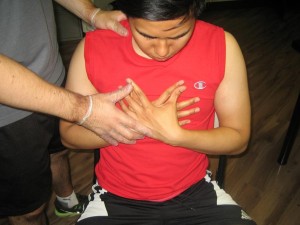Pulmonary edema is a condition characterized by the buildup of fluid in the lungs. Once this condition arises, the body should strain to get enough oxygen and shortness of breath arises.
https://www.youtube.com/watch?v=TZX5Kcd13bc
What are the indications?
If an individual develops pulmonary edema, the body struggles to obtain oxygen. The reason for this is the increasing amount of fluid in the lungs that prevents oxygen from moving into the bloodstream. The symptoms will worsen until the fluid is removed by the doctor.
Long-standing pulmonary edema

- Wheezing
- Shortness of breath while physically active
- Rapid weight pain especially in the legs
- Difficulty breathing when lying down
- Waking up at night with a breathless feeling that settles when sitting up
- Fatigue
- Swelling in the lower region of the body
High-altitude pulmonary edema
This is due to high altitude sickness or not getting adequate oxygen in the air. The usual indications include:
- Fever
- Coughing
- Headache
- Shortness of breath after physical activity and during rest
- Rapid, erratic heartbeats
- Difficulty walking uphill and on flat terrain
What are the risk factors?
Individuals diagnosed with heart issues or heart failure face the highest risk for ending up with pulmonary edema. The other risk factors that puts one at risk include:
- Vascular or blood ailments
- History of pulmonary edema
- History of lung ailments such as chronic obstructive pulmonary disorder (COPD) or tuberculosis
What are the causes?
The usual cause of pulmonary edema is congestive heart failure. This occurs if the heart could not pump blood regularly all over the body. This results to the backflow of pressure within the small blood vessels in the lungs which results to the leakage of fluid from the vessels.
Other medical conditions that can cause edema include:
- Pneumonia
- Heart attack or other heart conditions
- Kidney failure
- Abrupt high blood pressure
- Constricted, leaking or damaged heart valves
- Severe sepsis or blood poisoning from an infection
- Lung damage from a severe infection
- Pancreatitis
There are also external factors that places additional pressure on the lungs and heart such as:
- Severe trauma
- Exposure to high altitudes
- Near drowning
- Major injury
- Using prohibited drugs or overdose
- Lung damage due to inhalation of toxins
More Information / Disclaimer
The information posted on this page on pulmonary edema is for learning purposes only. Learn to recognize and manage this respiratory issue by taking a standard first aid course with Toronto First Aid.
